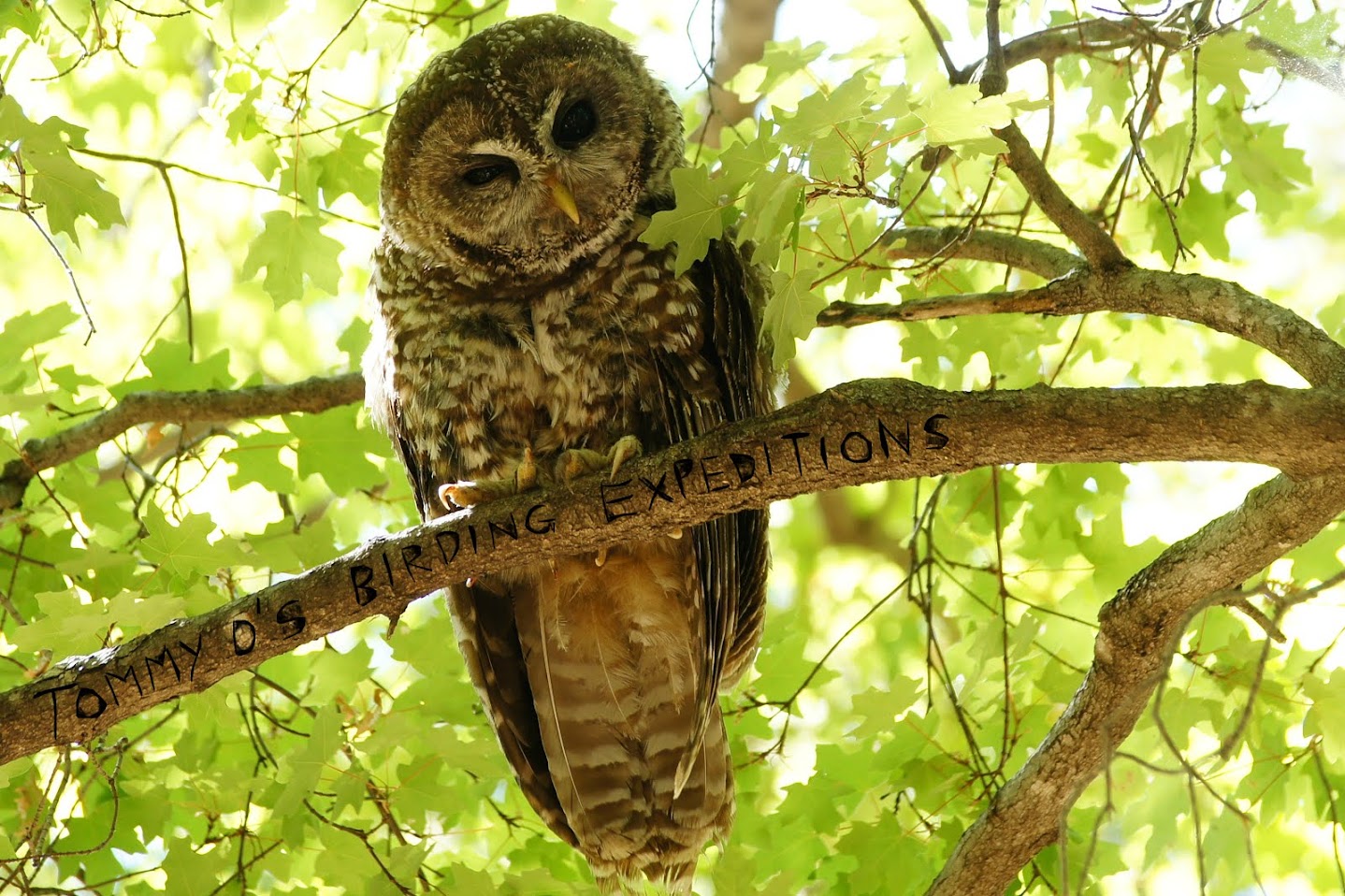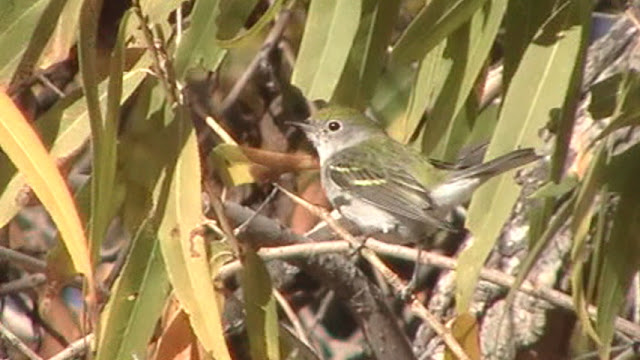Hi everyone,
Today on December 28th, 2012, I made another trip out to the Tres Rios Overflow Wetlands for another long day full of exciting birding. I spent the entire day at the location, where bird highlights were abundant as usual. Because I came so close to recording 100 species on Sunday's outing, I decided to give it another shot today. I went hardcore, working several areas more than once and packing my tripod and scope with the high chances of a distant identification need likely presenting itself. I spent most of the day alone, but Jeff Ritz and his mother Shirley birded with me for some of the morning also.
I often refer to Tres Rios Wetlands as an "identification clinic". It is a great place to get practice on a lot of different identification factors, whether birding by ear or identifying birds in flight. I learn new things during every visit. In the 2.5 miles that Tres Rios Overflow Wetlands runs west from 91st Avenue, I bird the immediate Overflow Wetlands, look at the birds through the fenced in adjacent Flow Regulating Wetlands, bird the Salt River's riparian habitat immediately to the south, and I also walk through some of the agricultural habitats in the area. Due to this outstanding combination of habitat, a variety of birds present is a guarantee.
When I start birding, I usually take my time during the first 1/2 mile of birding the Wetlands. Waterfowl are in the air and many fly in at dawn from the section of the waste water plant east of 91st Avenue, and many waterfowl also repeat the process at dusk by flying back to spend the night. This has been my strategy for finding WOOD DUCKS, and it worked today. In early dawn, I had a drake WOOD DUCK flying over the Flow Regulating Wetlands, and as I was standing by 91st Avenue at dusk, I had 4 more Wood Ducks fly overhead. The Wood Ducks were part of 14 duck/geese species observed today. Other highlights in this genre included CANADA GOOSE, GADWALL, all three TEAL, several flocks of RING-NECKED DUCKS, a flock of LESSER SCAUP, and a drake BUFFLEHEAD. Also observed recently have been Canvasback, Black-bellied Whistling-Duck, Common Merganser, and Snow Goose, but they stayed out of sight today.
The best story of the day came from raptors. Tres Rios is one of the best areas to view raptors, and I had close to 100 individual raptors represented by 14 different species. The rarest of the 14 was the continuing juvenile RED-SHOULDERED HAWK. This bird made a nice appearance for me about 1 mile west of 91st Avenue, and it perched on a short tree in the middle of some of the smaller basins. The observation today added to the list of the many perches and locations around the wetlands I've seen the Red-shouldered Hawk in. Other raptors seen came from a kettle of 10 BLACK VULTURES, ~30 TURKEY VULTURES, ~8 OSPREYS, at least 10 NORTHERN HARRIERS, 4 SHARP-SHINNED and 5 COOPER'S HAWKS, 1 adult BALD EAGLE, ~20 RED-TAILED HAWKS, 1 FERRUGINOUS HAWK who was a regal highlight, 4 AMERICAN KESTRELS, 1 MERLIN, 3 PEREGRINE FALCONS, and 1 PRAIRIE FALCON.
I also had another productive day for the continuing warblers, as I was able to record 8 different species. Highlights among the 8 warblers were the continuing CHESTNUT-SIDED WARBLER, NORTHERN PARULA, 2 YELLOW WARBLERS, WILSON'S WARBLER, and 2 BLACK-THROATED GRAY WARBLERS. The Black-and-white didn't show for me again today, perhaps it has moved on or is in a different part of the Wetlands. The warblers have been along the Salt River channel just to the south of the Wetlands, starting close to 91st Avenue.
Besides the three families summarized above, I had plenty of other highlights throughout the day. This included NEOTROPIC and DOUBLE-CRESTED CORMORANTS, AMERICAN WHITE PELICANS, 4 LEAST BITTERNS who called and remained out of sight, CATTLE EGRETS, one GREEN HERON, large numbers of WHITE-FACED IBIS, calling VIRGINIA RAILS and SORAS (one Sora gave me a good visual), plenty of COMMON GALLINULES, 1 SPOTTED SANDPIPER, 4 GREATER YELLOWLEGS, 8 INCA DOVES and 2 COMMON GROUND-DOVES, 2 GREATER ROADRUNNERS, ~8 BELTED KINGFISHERS, the continuing YELLOW-BELLIED SAPSUCKER slightly east of where I have been observing it, 1 adult male VERMILION FLYCATCHER, 1 ASH-THROATED FLYCATCHER, 3 LOGGERHEAD SHRIKES, 3 HOUSE WRENS and common MARSH WRENS, ~5 BLACK-TAILED GNATCATCHERS and 1 BLUE-GRAY GNATCATCHER, 1 BENDIRE'S THRASHER, the continuing SWAMP SPARROW as well as VESPER, LINCOLN'S, and SAVANNAH SPARROWS; 3 NORTHERN CARDINALS, several thousand YELLOW-HEADED BLACKBIRDS, a flock of WESTERN MEADOWLARKS, and several AMERICAN GOLDFINCHES.
Non-avian highlights included a BOBCAT who I came across and also 2 COYOTES. I also had a scare as a Pitbull like dog came running up behind me. It apparently didn't seem to know I was standing there and when I turned around, I got a stare down and growl before the dog decided to run the other way. It looked behind at me as it was running and didn't see the holes in the ground. I laughed a few minutes later at the sight of the dog tripping, but it served as a reminder that there are a lot of stray dogs who run around and breed in this area. They can be a potential danger and I would advise any of you who go to Tres Rios to keep that in mind. I ran into a ranger who informed me they are trying to get rid of the dogs.
At the end of the day that lasted 10.5 hours, I recorded 102 species. It was a long day, but seeing 100 at one location in an outing (a well wanted goal of mine) was worth the time spent. I saw many species in a hurry, as the Yellow-bellied Sapsucker was bird # 96 in just over six hours of birding. Over the last four+ hours, well...the final 6 I had to work very hard for! I needed a Green Heron for #100, and I hike down to the river gave me that bird that I almost missed. Flybys of both Merlin and last an adult Bald Eagle gave me my final number for the day, and also my best raptor count for the location and probably for a day's worth of birding. It was another great day at Tres Rios, a location that I am greatful for that is so close to home! In order to access Tres Rios Overflow Wetlands, a permit must be obtained from Tres Rios personnel.
A page for Tres Rios Overflow Wetlands can be found on my website at the link here:
http://birderfrommaricopa.com/tres-rios-overflow-wetlands.htm
Good Birding,
Tommy DeBardeleben (Glendale, Arizona)
Some of the highlights:
Chestnut-sided Warbler
Bendire's Thrasher
Sharp-shinned Hawk
American Kestrel












.jpg)
.jpg)
.jpg)




.jpg)


.jpg)
.jpg)
.jpg)
.jpg)
.jpg)
.jpg)
.jpg)
.jpg)
.jpg)
.jpg)

.jpg)
.jpg)
.jpg)

.jpg)

.jpg)
.jpg)

.jpg)
.jpg)
.jpg)
.jpg)
.jpg)
.jpg)
.jpg)
.jpg)
.jpg)
.jpg)

.jpg)